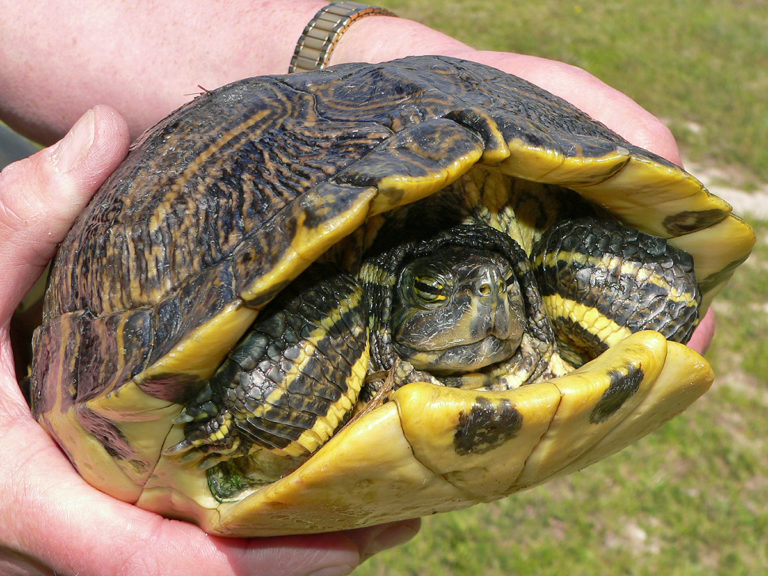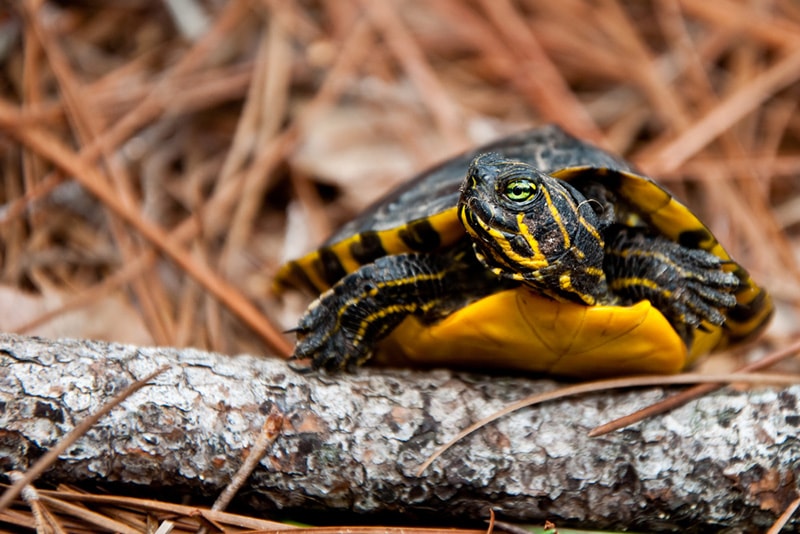Yellow-Bellied Slider Lifespan: A Deep Dive Into The Longevity Of These Fascinating Turtles
When it comes to pet turtles, the yellow-bellied slider is one of the most popular choices for reptile enthusiasts. But have you ever wondered how long these little guys can stick around? Understanding the yellow-bellied slider lifespan is crucial if you're thinking of bringing one into your life. From proper care to habitat setup, we'll uncover everything you need to know about keeping these turtles healthy and thriving for years to come.
Now, let's be honest here, folks. Turtles might not be as cuddly as dogs or as playful as cats, but they bring a unique charm to the table. And if you're ready to commit to their long-term care, you're in for a treat. The yellow-bellied slider lifespan can be surprisingly long, but it all depends on how well you take care of them.
So, whether you're a first-time turtle owner or just curious about these shelled wonders, this article will dive deep into everything you need to know. Stick around, and let's explore the world of yellow-bellied sliders together!
Read also:Pierre Poilievres Love Life Was He Married Before
Understanding the Basics of Yellow-Bellied Sliders
What Makes Yellow-Bellied Sliders Unique?
Yellow-bellied sliders are more than just cute little turtles with vibrant markings. These aquatic reptiles are native to the southeastern United States, where they thrive in freshwater environments. Their distinctive yellow stripes on their heads and legs make them stand out, but their charm goes beyond their appearance.
One of the coolest things about yellow-bellied sliders is their ability to adapt to different environments. They're highly active during the day, making them a joy to watch as they swim, bask, and explore their surroundings. But what truly sets them apart is their potential lifespan, which we'll delve into shortly.
Yellow-Bellied Slider Lifespan Overview
So, how long do yellow-bellied sliders live? In the wild, they can live anywhere from 20 to 30 years, but with proper care in captivity, their lifespan can extend even further. Some well-cared-for sliders have been known to live up to 40 years or more! That's a serious commitment, folks.
But here's the deal: their longevity depends heavily on their environment, diet, and overall health. If you're thinking of adopting a yellow-bellied slider, you'll need to be prepared for the long haul. This isn't a pet you can just set and forget. They require consistent care and attention to reach their full potential.
Factors Affecting Yellow-Bellied Slider Lifespan
Habitat and Enclosure Setup
Creating the perfect home for your yellow-bellied slider is key to ensuring a long and healthy life. These turtles need a spacious tank with both water and a dry basking area. A general rule of thumb is to provide at least 10 gallons of water per inch of your turtle's shell length. So, if your slider grows to be 10 inches long, you'll need a tank that holds at least 100 gallons of water.
Here's a quick checklist for setting up the ideal habitat:
Read also:Joni Lamb Resigns The Inside Story You Need To Know
- Aquarium size: At least 10 gallons per inch of shell length
- Water filtration: High-quality filter to keep water clean
- Basking area: Floating or elevated platform for drying off
- UVB lighting: Essential for shell and bone health
- Temperature control: Water temp around 75-80°F, basking temp around 85-90°F
Remember, a clean and well-maintained habitat is crucial for preventing diseases and promoting longevity.
Diet and Nutrition
Feeding your yellow-bellied slider a balanced diet is another critical factor in extending their lifespan. These turtles are omnivores, meaning they eat both plant and animal matter. As juveniles, they tend to be more carnivorous, but as they mature, their diet shifts toward more vegetation.
Here's a breakdown of what to feed your slider:
- Pellets: High-quality turtle pellets as the staple diet
- Protein: Occasional treats like feeder fish, insects, or cooked chicken
- Vegetables: Dark leafy greens, aquatic plants, and veggies like squash
- Fruits: Small amounts of fruit as an occasional treat
It's important to avoid overfeeding, as obesity can lead to serious health issues in turtles. Stick to a feeding schedule and monitor their weight regularly.
Common Health Issues and Prevention
Respiratory Infections
One of the most common health problems in yellow-bellied sliders is respiratory infections. These infections can be caused by poor water quality, incorrect temperature settings, or stress. Symptoms include wheezing, bubbling at the mouth, and lethargy.
To prevent respiratory infections, make sure your turtle's habitat is clean and well-maintained. Regular water changes and proper filtration are essential. Additionally, ensure that the water and basking temperatures are within the recommended range.
Shell Rot
Shell rot is another serious condition that can affect yellow-bellied sliders. It's usually caused by bacterial or fungal infections, often due to poor water quality or injuries to the shell. Signs of shell rot include soft spots, discoloration, or a foul smell.
Preventing shell rot involves maintaining clean water, providing a dry basking area, and inspecting your turtle's shell regularly for any signs of damage. If you notice any issues, consult a veterinarian who specializes in reptiles.
Yellow-Bellied Slider Care Tips
Handling and Interaction
While yellow-bellied sliders are fascinating creatures, they're not the most cuddly pets. Handling them too much can cause stress, which can negatively impact their health. It's best to keep interactions to a minimum and focus on providing a stimulating environment for them to explore.
If you do need to handle your slider, make sure to wash your hands thoroughly before and after. Turtles can carry salmonella, so it's important to practice good hygiene to protect both you and your pet.
Enrichment and Stimulation
Keeping your yellow-bellied slider mentally and physically active is crucial for their overall well-being. You can provide enrichment by adding decorations like rocks, plants, and tunnels to their tank. These items not only make their habitat more interesting but also encourage natural behaviors like exploring and foraging.
Another great way to stimulate your slider is by offering a variety of food options. Mixing up their diet with different types of plants, proteins, and occasional treats keeps mealtime exciting and helps prevent boredom.
Understanding the Yellow-Bellied Slider Lifespan in Captivity
How Long Do They Really Live?
As mentioned earlier, the yellow-bellied slider lifespan in captivity can exceed 30 years with proper care. Some well-maintained sliders have even reached the ripe old age of 40 or more! But achieving such longevity requires dedication and consistency in their care.
Here's a breakdown of what you can expect:
- Juvenile phase: First 5-10 years
- Adulthood: 10-20 years
- Senior phase: 20+ years
Each phase comes with its own set of challenges and care requirements, so it's important to stay informed and adapt as your turtle grows older.
Signs of Aging in Yellow-Bellied Sliders
As yellow-bellied sliders age, you might notice changes in their behavior and appearance. Some common signs of aging include:
- Slower movement
- Decreased appetite
- Changes in shell texture or color
- Increased susceptibility to illness
While aging is a natural process, you can help your slider age gracefully by continuing to provide a healthy diet, clean habitat, and regular veterinary check-ups.
Expert Tips for Extending Yellow-Bellied Slider Lifespan
Regular Veterinary Check-Ups
Just like any other pet, yellow-bellied sliders benefit from regular veterinary care. Schedule annual check-ups with a reptile specialist to monitor your turtle's health and catch any potential issues early on.
During these visits, your vet can perform tests to check for nutritional deficiencies, infections, or other health concerns. They can also provide guidance on diet, habitat setup, and general care to ensure your slider stays in tip-top shape.
Monitoring Water Quality
Water quality is one of the most important factors in maintaining a healthy yellow-bellied slider. Poor water conditions can lead to a host of health problems, including infections, shell rot, and respiratory issues.
To keep the water clean, invest in a high-quality filtration system and perform regular water changes. Test the water parameters regularly to ensure they remain within the safe range for your turtle. Parameters to monitor include pH, ammonia, nitrite, and nitrate levels.
Conclusion: Ready to Commit to a Lifelong Friend?
So, there you have it, folks. The yellow-bellied slider lifespan can be impressively long if you're willing to put in the effort to care for them properly. From setting up the perfect habitat to providing a balanced diet and regular veterinary care, every step you take contributes to their overall health and longevity.
Before you rush out to adopt a yellow-bellied slider, take a moment to consider the long-term commitment involved. These turtles can live for decades, so you'll need to be prepared for the responsibility that comes with owning one.
Now, it's your turn! If you've found this article helpful, feel free to leave a comment or share it with fellow reptile enthusiasts. And if you're ready to dive into the world of yellow-bellied sliders, check out our other articles for more tips and tricks to keep your turtle happy and healthy.
Table of Contents
- Understanding the Basics of Yellow-Bellied Sliders
- What Makes Yellow-Bellied Sliders Unique?
- Yellow-Bellied Slider Lifespan Overview
- Factors Affecting Yellow-Bellied Slider Lifespan
- Habitat and Enclosure Setup
- Diet and Nutrition
- Common Health Issues and Prevention
- Respiratory Infections
- Shell Rot
- Yellow-Bellied Slider Care Tips
- Handling and Interaction
- Enrichment and Stimulation
Article Recommendations


